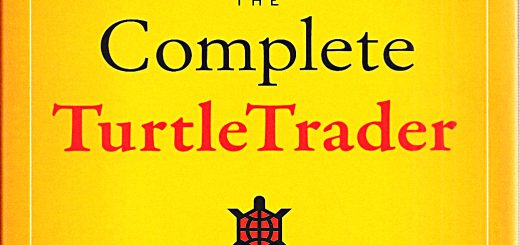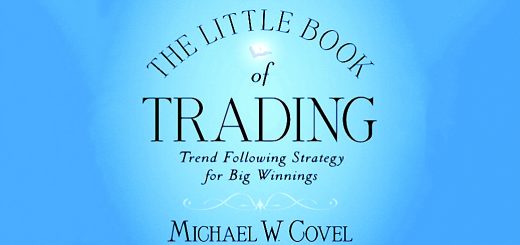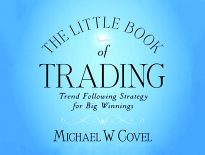The Turtle Traders #4

Today’s post is our fourth look at the Turtle Traders, and our second visit to Michael Covel’s book on the subject.
Contents
Trading Places
The general perception is that the Turtle experiment inspired the movie Trading Places.
- That has certainly been my understanding over the years.
- Dennis himself also appeared to be under the impression that the movie came later.
But the movie came out in Spring 1983, and the experiment began that winter (six months later).
The film’s screenwriter, Herschel Weingrod, flatly said that he had never heard of Richard Dennis when his script was completed in October 1982.
It turns out that the movie is supposedly based on the Mark Twain short story “The £1,000,000 Bank Note”.
Covel finds this suspicious:
[Weingrod] was researching and writing a script in the early 1980s about Chicago trading and didn’t immediately hear of Richard Dennis?
Somewhat confusingly, Covel also suspects that the movie was also an influence on Dennis – a catalyst for him to take action.
The Turtles
The next part of the book covers some character sketches of the people selected for the experiment, stressing the variety of people included.
- There’s also a fairly detailed description of the interview process, and then of the training process.
Here’s my favourite exchange from the interviews:
Carr asked Dennis, “Do you trade technically or fundamentally?
Dennis replied, “We trade technically.”
Carr then said, “Is fundamental trading dead?”
“We hope not”, said Dennis.
The questions
Candidates had to complete a 63-question true / false test.
Covel presents a selection of the questions, which mostly seem to be false:
- Trade long or short, but not both.
- Trade the same number of contracts in all markets.
- If you have $100,000 to risk, you should risk $25,000 on every trade.
- When you enter, you should know where to exit if a loss occurs.
- You can never go broke taking profits.
- The majority of traders are always wrong.
- Average profits should be about 3 or 4 times average losses.
- A trader should be willing to let profits turn into losses.
- A very high percentage of trades should be profits.
- Needing and wanting money are good motivators to good trading.
- One’s natural inclinations are good guides to decision-making in trading.
- Luck is an ingredient in successful trading over the long run.
- It’s good to follow hunches in trading.
- Trends are not likely to persist.
- It’s good to average down when buying.
- A trader learns more from his losses than his profits.
- Others’ opinions of the market are good to follow.
- Buying dips and selling rallies is a good strategy.
- It’s important to take a profit most of the time.
Dennis was clear about what he was looking for. He wanted people who had high math aptitude and high ACT (American College Testing) scores.
He wanted people with some interest in computers or market methods. Those who worked to systematize things had an advantage.
The majority of people we wound up hiring had some interest in games. They were chess players or backgammon players – Dennis.
Dennis and Eckhardt were trying to assess the applicants’ ability to think in terms of odds – the kind of thinking needed to win at blackjack in Las Vegas.
They wanted applicants to treat money abstractly so they could focus on using it as a tool to make more. Dennis was interested in people who could subsume their egos.
Training
One of the interesting observations during the process concerned the symbiotic relationship between Eckhardt and Dennis:
Bill did a lot of the real mathematical work on developing the systems. I think he didn’t have Rich’s trading genius, which is why I think in their discussion, he thought that trading genius was the main part whereas Rich thought the system was the main part.
Eckhardt and Dennis played down the role of luck in the experiment, and also that of intelligence:
How much of a role does luck play in trading? In the long run, absolutely zero. I don’t think anybody winds up making money in this business because they started out lucky – Dennis
Average intelligence is enough. Beyond that, emotional makeup is more important. This is not rocket science. However, it’s much easier to learn what you should do in trading than to do it – Eckhardt.
Covel adds:
As with anything in life, most people know what the right thing to do is but fail to do it. Trading is no different.
Many people can trade small amounts. But as the size of their trading is increased, their decisions become more significant and problematic. They begin to think about how much they are winning or losing.
Disassociating the dollars from the trading was a huge part of what was instilled in the Turtles.”
Since the markets are a zero-sum game, even a marginally profitable trader must win money from other market players.
By definition, they must use different methods than everyone else in the game. The most important thing was to have a sound trading approach tested in the real world.
The philosophy
The philosophy underlying the Turtle training was the scientific method:
- Define the question.
- Gather information and resources.
- Form hypothesis.
- Perform experiment and collect data.
- Analyze data.
- Interpret data and draw conclusions that serve as a starting point for new hypotheses.
- Publish results.
Covel links this approach to Kahneman’s pioneering work (years later) on behavioral finance, which would lead to a Nobel Prize (for Kahneman).
Trends
By the time of the Turtle experiment, Dennis was a trend trader.
From the 1950s into the 1970s, there was one preeminent trend trader with years of positive performance: Richard Donchian.
In 1960, Donchian reduced this philosophy to what he called his weekly trading rule. When the prices moves above the high of two previous calendar weeks (the optimum number of weeks varies by commodity), buy. When the price breaks below the low of the two previous calendar weeks, sell short.
The advantages of relying only on price are that (1) you don’t need to know the fundamentals (individuals would find it hard to compete here with large corporations) and (2) you can trade multiple markets in a similar style.
If acting on news, stock tips, and economic reports were the real key to trading success, then everyone would be rich.
Axioms
Here are a few of the axioms that the Turtles were taught:
- Do not let emotions fluctuate with the up and down of your capital.
- Be consistent and even- tempered.
- Judge yourself not by the outcome, but by your process.
- Know what you are going to do when the market does what it is going to do.
- Every now and then the impossible can and will happen.
- Know each day what your plan and your contingencies are for the next day.
- What can I win and what can I lose? What are probabilities of either happening?
Questions
Eckhardt had five questions that the Turtles always had to be able to answer:
- What is it the state (price) of the market (stock being traded)?
- What is the volatility of the market (average true range, or N)?
- What is the equity being traded (overall size of portfolio and this position)?
- What is the system or the trading orientation (plan for buying and later selling)
- We’ve covered the two systems that the Turtles used in earlier articles)?
- What is the risk aversion of the trader or client (what’s the maximum at risk – typically 2% of the portfolio)?
Eckhardt did not want his students to wake up and say, “I’m feeling smart today”, or “I’m feeling lucky today”, or “I’m feeling dumb today”. He taught them to wake up and say, “I’ll do what my rules say to do today”.
No memory
Eckhardt wanted the Turtles to think in terms of “memory-less trading.”
“You shouldn’t care about how you got to the current state but rather about what you should do now. A trader who trades differentially because of swings in confidence is focusing on his or her own past rather than on current realities.”
The Turtles were taught that they had to exit with a small loss, because they didn’t know how far it could drop.
Dennis said that to add to a losing position was like being the kid who’s been burned on a hot stove once already but puts his hand back on the stove just to prove it was the stove that was wrong.
Of course, if after taking the loss the market gave another signal to enter, they would re-enter.
Eckhardt said that once an initiation is made, it should not matter at all to subsequent decisions what the initiation price was. He wanted the Turtles to trade as though they didn’t know what their entry price was.
Rules
Near the end of the training, Dennis and Eckhardt reiterated that the successful students would be the ones who followed the rules and did not deviate. They did not want creative geniuses – they wanted robots.
We’ve covered the Turtle Rules is earlier articles, so I will briefly summarise and then focus on new details.
- The Turtles used 20-day and 55-day breakouts, long and short, as entries.
- Two and four-week moves in the opposite direction were used for exits (as well as stops).
- Stops were placed at 2N (2 * Average True Range).
- Positions were sized to risk less than 2% of the portfolio value.
On average, half their money went into each of these systems (20 and 55 -day), but each trader had personal discretion on the split.
Eckhardt knew it was hard to do much better [than price]:
“Pure price systems are close enough to the North Pole that any departure tends to bring you farther south.”
Entries
Eckhardt witnessed many systematic traders spending great deal of time searching for the “good” places to enter. He cautioned against it:
“It just seems to be part of human nature to focus on the most hopeful point of the trading cycle. Our research indicated that liquidations are vastly more important than initiations.
If you initiate purely randomly, you do surprisingly well with a good liquidation criterion.”
Dennis actually challenged the Turtles to randomly enter the market and then manage their trades after getting in.
Pyramiding
The Turtles would add another “unit” (their initial position size) when a trade moved in their favour by 1N (1 * ATR).
- This could be repeated until the position grew to five units. (( Note that the Original Turtle Rules said this limit was 4 units ))
As each new unit was added, stops were moved up to 2N (2 * ATR) away from the latest unit price.
There were also market limits:
- 6 units across “closely correlated markets” (eg. gold and silver)
- 10 units across “loosely correlated markets” (eg. all commodities, all currencies)
- 12 units in a single direction (long or short)
Losses
For every 10% drawdown in their total account, Turtles had to reduce their trading unit size by 20%.
- So an account at 90% would trade 1.6% rather than 1.8%.
- An account at 80% would trade 1.3% rather than 1.6%.
This was designed to stop accounts shrinking too quickly when markets were going against them.
- When their account was positive, unit (position) size was simply 2% of the daily account value.
Edge
Dennis said the average system might be successful 35% of the time.
Yet the Turtle rules had a positive expectation per trade because their winning trades were many multiples larger than their losing trades.
Expectation (or edge, or expected value) is calculated as:
E = (W% * Wavg) - (L% * Lavg)
Where W% is the percentage of winners and Wavg is the average winning amount. Note that W% + L% must sum to 1 (or 100%).
If you run through some examples, you’ll find that the relative size of winners and losers can outweigh a low winning percentage.
- Systems with 40% or even 30% winners can be profitable.
Think about Las Vegas. A small edge keeps casinos in business. That’s how those monster hotels are paid for. Dennis always wanted his trading to resemble being the house.
Eckhardt was clear: “The important thing is to limit portfolio risk. The trades will take care of themselves.”
Covel notes that the average Turtle trader had a monthly expected gain of around 1.9%, compared to around 0.7% for the US indices.
Conclusions
I’ve enjoyed Covel’s book more today – perhaps because we’ve got around to the nitty-gritty of how the Turtles traded.
- There isn’t much new here, but today’s chapters have been an interesting read.
And I’m curious to see what remains to be said, now that the system has been explained.
- So I’ll be back a couple of weeks with the next section of the book.
We are on track to finish the book in another two or three articles (six or seven in total).
Until next time.
















